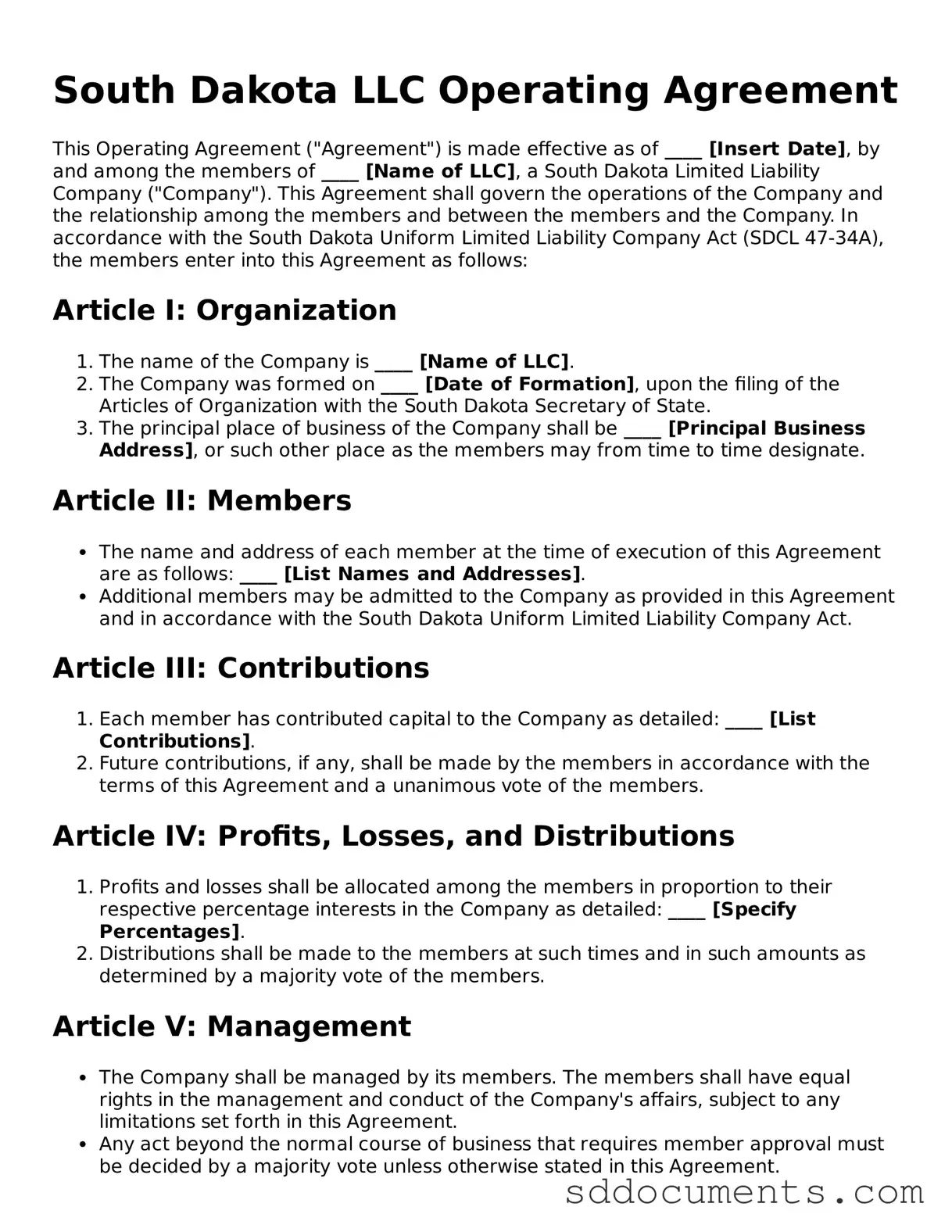Free Operating Agreement Template for South Dakota
The South Dakota Operating Agreement form is a crucial document that outlines the management structure and operational procedures of a limited liability company (LLC) in South Dakota. This agreement serves as a roadmap for members, detailing their rights, responsibilities, and the processes for making important decisions. By establishing clear guidelines, it helps prevent misunderstandings and promotes a harmonious working relationship among members.
Ready to get started? Fill out the form by clicking the button below.
Customize Document Online
